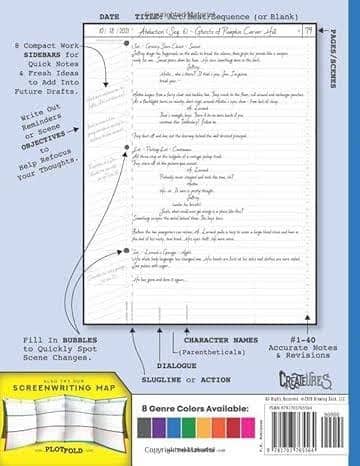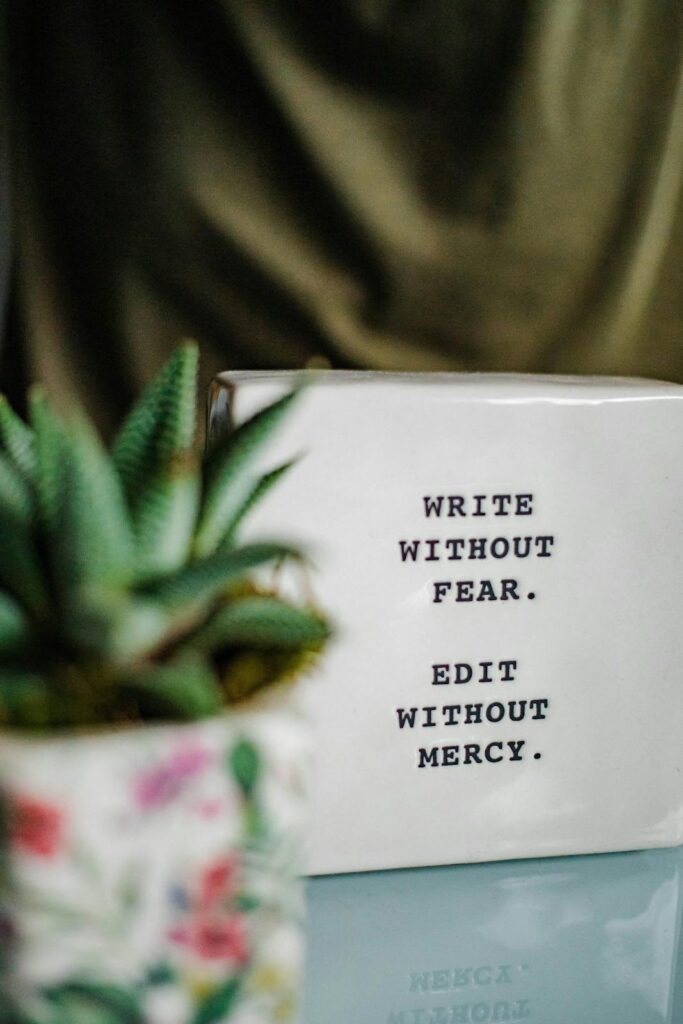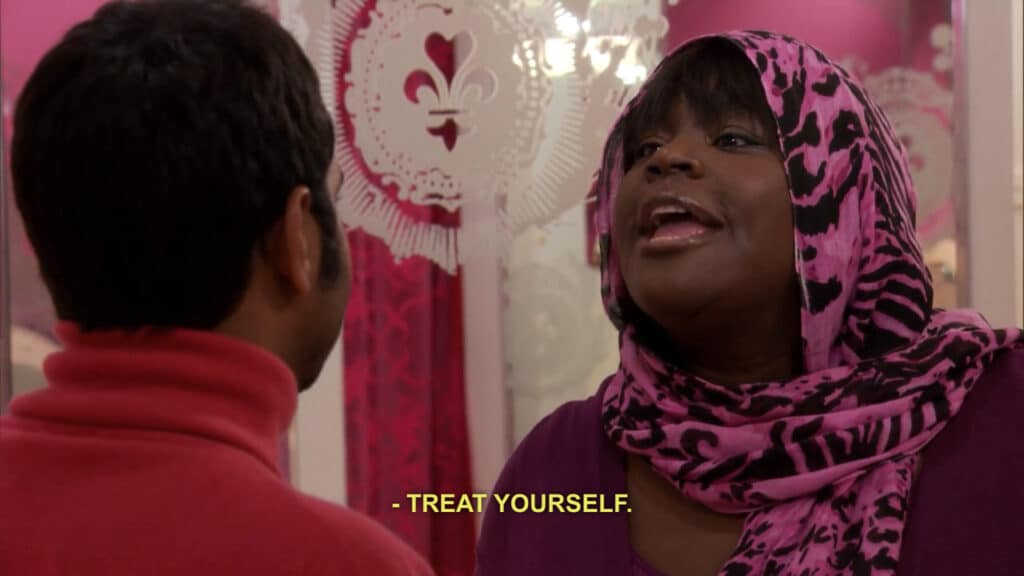Introduction
It’s that time of year again. The leaves are turning, the temperature drops, and we’re all ready for pumpkin-spice lattes and the winds of winter coming our way.
Now that November has arrived, so has National Novel Writing Month, or NaNoWriMo, a unique challenge for writers everywhere.
Now, you may wonder why a novel challenge is doing on a page for screenwriters, but all will be revealed as we discover what NaNoWriMo involves, and why it may be the perfect challenge for us screenwriters, if we adapt it right!

What is NaNoWriMo?
Let’s rewind to 1999, and a grassroots effort to encourage writers to set time aside to dedicate to their craft.
The challenge: write 50,000 words in the thirty days of November. Since its beginnings, NaNoWriMo has attracted writers across the world, inspiring them to push their creative boundaries.
NaNoWriMo’s purpose is to first motivate writers to just get words down on the page, and also build a sense of community among the participants. By lowering the barrier to entry and emphasizing quantity rather than quality, writers can produce a first without the pressure of perfection, something many of us struggle with.
Yes, NaNoWriMo is primarily centered around prose, but us screenwriters can also adapt the challenge’s principles to fit our needs. Screenplays have their own requirements, such as unique formatting and structure, but the actual task remains the same – to generate new material and overcome writer’s inertia and block.
If we embrace the NaNoWriMo spirit, the possibilities of kickstarting our creative process all the way through to completing a first draft are endless. After all, we’ll be making revisions if we write a script in a year anyway, so why not try thirty days?
Why NaNoWriMo is perfect for screenwriters
For most writers, the first hurdle is getting something – anything – written down in the first place. The fear of writing something that isn’t good enough can lead to procrastination and extended writers’ block.
If you’re struggling with writers’ block, then we sure do have the article for you. Check out our strategies for unstuck creativity here.
NaNoWriMo encourages us to get out of our funks and embrace the messiness of the first draft, or ‘vomit draft’. The goal of the challenge for screenwriters is not to produce a polished screenplay, but to capture our raw ideas on paper. By allowing ourselves to write freely, we open the doors to creativity and may just surprise ourselves. We can always refine things later on!
Talking of vomit drafts, the one thing that I can’t live without when embarking on challenges like this, is my vomit draft screenwriting notebook. Just like our fancy, techy screenwriting software that we know and love, this notebook has the formatting set out for you with guidelines. So, if you don’t have access to your computer, or just prefer to use a good ol’ pen and paper, you can scribble all your ideas down freely.
This vomit draft book from Amazon is my personal favorite and comes in a variety of colored covers to suit your chosen genre.

Adapting NaNoWriMo for Screenwriting
In its original form, NaNoWriMo may not suit screenwriting down to a T, but there are ways we can tailor it to fit our individual goals and preferences. Let’s explore some possibilities and how you can adapt NaNoWriMo for your projects:
90-Page November
Set yourself a goal to write a traditional full-length screenplay (roughly 90 pages) in November. This equates to roughly three pages per day, which is totally doable! It doesn’t matter in this instance if you haven’t planned your story – just trust the process and start from the opening scene. You’ll never know where it’ll take you.
30-Day Screenplay
Similar to 90-Page November, this asks you to commit to writing a complete screenplay in 30 days. This doesn’t need to be a feature film necessarily, but could be a short film, TV pilot or even a web series. The key is to have a completed draft by the end of the month.
Daily Scene Challenge
If a full script seems overwhelming, why not try writing one scene per day for 30 days? They could be completely unrelated scenes or can be pieced together to form a bigger picture or wider narrative.
Character Development Challenge
If you’re a screenwriter who finds developing your characters tricky, try using NaNoWriMo to develop a different character each day. Write their backstory, motivations, flaws and quirks. Again, they could be characters for one story, or new ones to use in later stories.
Challenge accepted?
Crush your NaNoWriMo goals with Celtx’s all-in-one scriptwriting tools.
Start crafting your story today!
Theme Exploration
Dedicate time each day to explore a different theme you want to tackle within your screenplay. Write short scenes or dialogue exchanges that reflect each theme, to build upon the bare bones of your screenplay.
Flash Scene Challenge
Every day, write a short 1-2 page scene that explores a moment in a character’s life. What sort of person were they in their younger days, compared to their older days? What events in their life affected them, and how?
Genre Roulette
If you’re not sure which genre you’d like to write in, why not try all of them? Each week, work on a scene in a different genre: horror, comedy, thriller, drama. This is a great exercise for diversifying your portfolio or simply dipping your toes into a new genre.
Writing Prompt Challenge
If, like me, you struggle to come up with that initial grain of an idea, then writing prompts could be your best friend during NaNoWriMo! Use daily writing prompts to inspire a short scene – this could be every day or over a week, depending on what you’d prefer. At the end of the month, you’ll have from 4 to 30 new ideas from which to build.
Check out our mega-list of writing prompts here.
Collaborative Challenge
Or, if you’d rather have an actual best friend write along with you, NaNoWriMo is the perfect time to partner up with another writer to co-create a screenplay. Each can take it in turns writing scenes or developing characters.
With two heads working on the same project, you may think of new ideas and directions you maybe wouldn’t have considered before!
What’s important is that you pick a goal that works for you based on your style, availability, and specific writing needs.
If you are unable to dedicate time every single day, build a writing routine that suits your lifestyle and what you have going on. Once you’ve got a routine, stick to it!
The power of JUST WRITING: Overcoming perfectionism
One of the most critical aspects of NaNoWriMo is the emphasis on just writing. Many of us get bogged down in the nitty gritty, constantly editing and second guessing ourselves along the way.
The goal of the challenge is to free ourselves from our constraints and let ideas flow without hesitation.
Write drunk; edit sober
Oscar Wilde
While we don’t encourage literal drunkenness, the sentiment rings true. Write from your first instinct and critique it later, no matter what the result may be.
Our over-critical minds can also prevent us from simply writing our ideas down in the first place. Have you ever woken up in the middle of the night with a stellar idea for a movie, and just didn’t write it down because you thought it wasn’t good enough? Yup, me too!
The worst feeling is waking up in the morning, having forgotten the idea altogether, and asking yourself ‘what if?’. This fear of imperfection can prevent us from truly embracing our moments of inspiration.
By embracing the core mindset of NaNoWriMo, we prioritize the pure act of writing, safe in the knowledge that we can edit later.

Ready to get started? Celtx is here to help. Start writing today!
NaNoWriMo tips for Screenwriters
So you’ve decided on a challenge for NaNoWriMo, but now it’s November 1st and you’re able to start writing. Here are our practical tips for making it through the month and reaching that all-important goal.
Set Small, Achievable Daily Goals
First, split your larger goal down. Aim for a specific target every day (for 90 pages, that’s 3 pages per day). Breaking it down into manageable chunks will make the overall challenge feel much less daunting.
Schedule Dedicated Writing Time
In your calendar or diary, mark out a specific time every day to write – treat it like an appointment. Make sure to write in the same place every day, and make the space as creatively stimulating as possible, away from common distractions.
Collaborate with Celtx
Here at Celtx, we’re here for every script and challenge that comes your way. Our tools allow you to share drafts and collaborate with your writing buddies. Great for motivating others and holding yourself accountable throughout the month!
Forget Formatting
Yes, I know we bang on about how important formatting is in every screenplay. However, with NaNoWriMo we’re telling you to throw it out the window and stamp on it! During the month, your focus should be on ideas and not perfect formatting.
Related Reading: “How Writing Challenges Made Me a Better Writer” – Rachel Craft for SFWA
Be flexible
It’s natural for our stories to change shape as we write, especially in a challenge like NaNoWriMo. If you find your original idea is evolving, don’t be afraid to pivot and try something new. Run with a new idea and embrace the unexpected!
Space, Space, Space
This is so important, we’re going to mention it twice! Designate a comfortable and distraction-free writing space for the month, and personalize it to suit you.
Track Your Progress
By tracking your progress, you can see how far you’ve come and what you’ve achieved so far. Use a simple spreadsheet or a writing app to track your daily word count and goals to keep you motivated.
Notion is my favorite app in organizing all my work, and that also goes for NaNoWriMo. There are many free and inexpensive Notion templates available online.
Reward Yourself
As you track your progress, celebrate your small victories along the way, and treat yourself to something you enjoy. Everything from a favorite snack to taking a trip to the movies, anything can be a reward.

The joy of NaNoWriMo is that you can completely make it your own! There are no rules, and that can be extremely liberating as a creative, especially with all the rules and conventions screenwriting comes with.
NaNoWriMo Successes
So, does NaNoWriMo actually help writers become published? In short, yes! Sara Gruen’s 2006 historical romance novel, Water for Elephants, was written as part of the challenge, following protagonist Jacob Janowski’s memories in the circus business. While he cannot remember whether he’s 90 or 93 years old, there is much Jacob does recall.
In fact, the novel was adapted into a movie in 2011, with the screenplay penned by Richard LaGravenese.
Gruen’s original success with the novel just proves that NaNoWriMo is more than just a writing challenge, but a way to kickstart a writing career!

Join the Challenge and Write with Celtx
As you embark on your NaNoWriMo journey, why not join the challenge using Celtx’s suite of tools. We help you streamline your process, leaving you to concentrate on what’s important – writing!
Plan, write, and organize your screenplay effectively from day one to day thirty. Our features are designed specifically for screenwriters and can help you stay focused during NaNoWriMo!
Are you doing NaNoWriMo? Share your progress with us on our Instagram and TikTok by tagging Celtx in your updates. You could see yourself featured on our channels!
Conclusion
So, we’ve proven that NaNoWriMo is not just for novelists, but also a fantastic opportunity for us screenwriters to jumpstart our creative process. By setting clear goals, embracing the messy nature of first drafts, and committing to the act of writing, NaNoWriMo can help us make significant progress in our scriptwriting journeys!
Remember, the goal is to get your ideas out there. So, grab your screenwriting tools, set your sights on November, and let the words flow!
Need a little extra motivation? Follow us on socials and let Celtx cheer you on!
Up next:
- Is Now the Right Time to Adapt Your Sci Fi Script?
- How to Write a Good Story Using the Five-Act Structure
- How to Write a TV Show (A True Beginner’s Guide)

